Among the many hats that I wear, one of my favorites is a caving helmet. For many years my wife and I have been members of the National Speleological Society, an organization dedicated to the study, exploration and conservation of caves and their environments. The NSS is more than just a group of adventure-seekers. Its members are not just hobbyists, but rather a diverse group of speleologists — a scientific term for those who study caves — who are passionate about protecting these fragile underground ecosystems.
The NSS is at the forefront of American caving, working to advance our understanding and appreciation of caves. The society is involved in
- Conservation — actively working to preserve caves from damage
- Education — teaching new generations about safe caving practices
- Research — conducting scientific studies on cave geology and biology
- Cave rescue — training skilled teams to assist in emergencies
Caving was one of the first passions my wife and I dove into together, right alongside bicycling and search and rescue. Over the years, we’ve done it all, from conservation to cave rescue, but the things that stand out the most are the trips involving exploration and mapping.
As members, my wife and I have experienced all of these facets of caving. But you may have noticed that I deliberately left one item off that list: recreation. That’s because there’s a world of difference between a recreational thrill and true exploration. Most recreational cavers are thrill-seekers looking for an adrenaline hit. Adrenaline is produced when the brain perceives danger or stress, usually meaning someone has gotten themselves into trouble. But I’ll save the topic of adrenaline for another article.
Thrill seekers tend to get themselves into trouble. In the insuring medical emergency, formations are broken, rare lifeforms destroyed and rescue teams are left scrambling to save the day. Caves are too ancient, too fragile and too unforgiving to treat them like an amusement park ride.
Caving is not an activity for the faint of heart. It requires a deep respect for the underground environment and a commitment to preserving its delicate balance. Unlike thrill-seekers who might damage formations and disrupt the ecosystem, we approach caving with a sense of reverence and responsibility.
Exploration is something altogether different. For me, exploration is the most captivating aspect of caving. It’s the thrill of locating a passage no human has ever seen before or finding a cave that no one knew existed. Think of it this way: you are entering a world millions of years old, untrodden by human feet. It’s like Neil Armstrong setting foot on the Moon, with the knowledge that he is the first person to ever walk there. Caves don’t get as much coverage as the Moon landings, but sometimes getting through them is equally challenging.
Unlike the surface of the Moon or a remote mountain peak, caves don’t come with maps. You can’t just pick up a guidebook to an unexplored cave system. While National Geographic loves to talk about remote caves, they follow us into them. Cavers have to make their own maps and that can be an adventure in itself. That curve in the passage might lead to a dead end or it might open into ten miles of borehole. More likely, though, it’s hiding a series of nasty narrow squeezes, at least one of which is tighter than what my chest can manage.
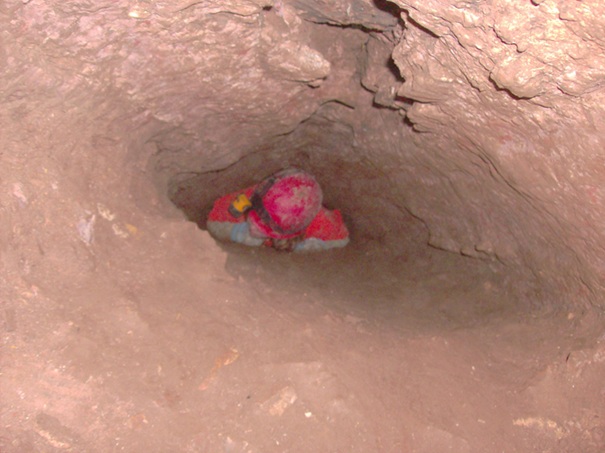
Recently I took part in an expedition into a commercial cave that has been open to the public for more than a century. It has a lot of mapped passage and multiple commercial tour routes and while most of the cave’s passages are well-traveled, some remain closed and mysterious and there are still leads that remain unexplored. Our target was one such lead, a tight squeeze noted on the map, where moving air hinted at more cave beyond. In caving, a “breathing” passage is a sign of a barometric pressure difference, signaling hidden chambers. This means the cave “breathes” with the outside world, a potential hint of something interesting beyond.
Our team of six set out loaded with gear. Going into the unknown means being ready for anything: gear to get you in and gear to get you back out, equipment for potential research, the readiness not to return the same day and everything needed to survey along the way.
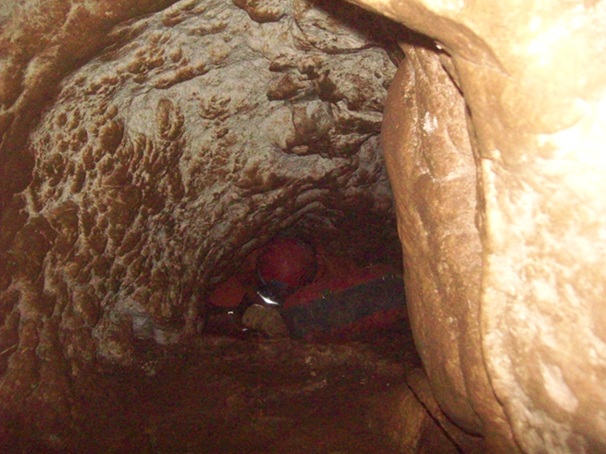
The squeeze was the kind where you decide which way you want your head to be facing and slide in, pulling yourself with your fingers and pushing with the toes of your boots, hoping not to hit an obstacle that will end your trip. Luck was with us. The squeeze opened into a small room, followed by another squeeze and another. The squeezes tested our resolve and physical limits. It was a challenging task, but one that allowed me to appreciate the spirit of exploration.
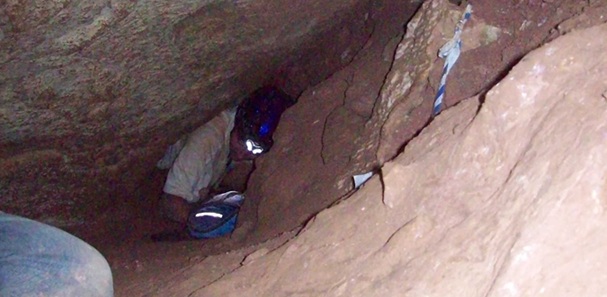
A horizontal squeeze, as icky as it sounds, is infinitely preferable to a vertical slot. In a vertical slot, you’re inadvertently lying on one of your arms or pushing it ahead of you like an awkwardly placed tree branch that does nothing to help.
But we had cave! New cave! Our travel was impeded not just by the series of annoying squeezes, but also by the need to map as we went. It’s an unspoken code in the exploration world: don’t “scoop” passage. Map it and leave what you couldn’t get to for someone else to explore.
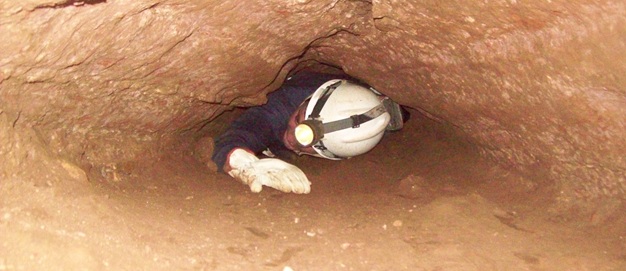
Just after midnight came the real test: a vertical crack so narrow that each inhale wedged you tighter, each exhale freed you to move. I want to say it’s sexy, but my washing machine would never agree. A lot of caving trips send you home looking like you’ve been wrestling pigs in the mud. Not elegant, not comfortable, certainly not laundry-friendly, but that’s caving.
My job on this trip was surveying. I was “lead tape” or “back tape” depending on who was leapfrogging whom. Surveying requires you to be detail-oriented. You have to set good survey points that are in useful locations and won’t be destroyed by time or clumsy cavers. And you have to be dead-on for your azimuth and inclination readings or your map will be no better than a five-year-old’s crayon drawing.
We worked late into the night, carefully logging a few hundred feet of new passage with a few small rooms and a lot of squeezes. No breathtaking formations, just aragonite dustings and moonmilk, basic sedimentary deposits. It was a tough night, but a night well spent. The satisfaction was immense. At the end of the trip, as we gathered around the draft map, our sketcher (cartographer) scrawled a note in the margin: “There be dragons here”, a nod to the medieval cartographers who marked uncharted territories with mythical creatures. It was a fitting metaphor for our own quest, which had taken us into the unknown and pushed us to our limits.
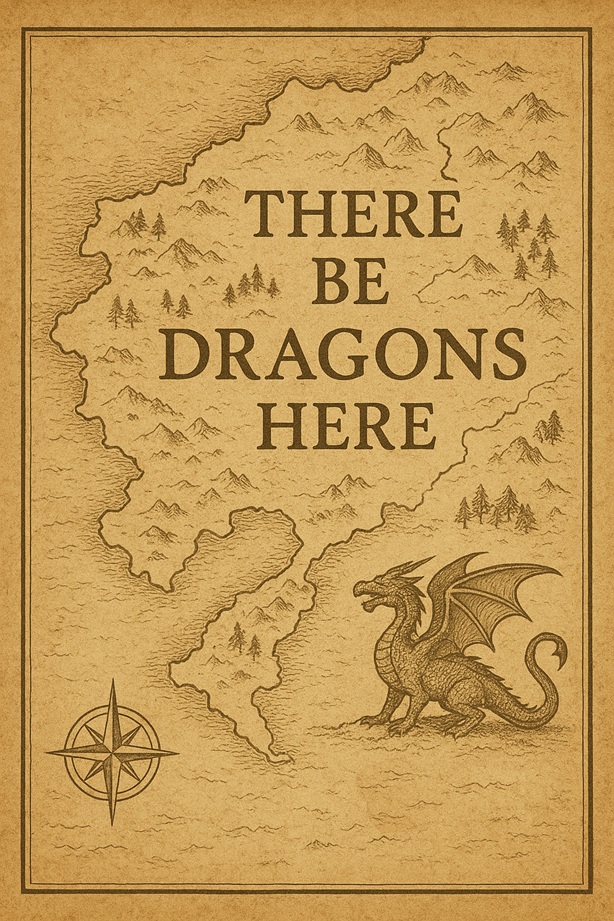
As I looked at the map, I couldn’t help but feel a sense of pride and accomplishment. We had uncovered new passage, documented our findings and contributed to the ever-growing body of knowledge about this incredible cave system.
Caving is not just an adventure. It’s a journey of discovery, a test of physical and mental endurance and a chance to connect with the natural world in a unique way. It’s a world that requires patience, respect and a willingness to push beyond your comfort zones.
For those who are drawn to the underground realm, there’s no shortage of excitement and challenge. Whether you’re a seasoned caver or just starting out, the world of caving has something to offer. So, if you’re ready to embark on an odyssey of discovery, join us in the underground world of caves. Just be prepared to get a little dirty. I doubt my washing machine will ever forgive me, but I wouldn’t trade these muddy, exhausting nights underground for anything.
Exploration underground is a quest, as much about patience and persistence as bravery, every bit as mythic as chasing dragons. Because sometimes, the real adventure isn’t in slaying dragons. It’s in finding where they live.
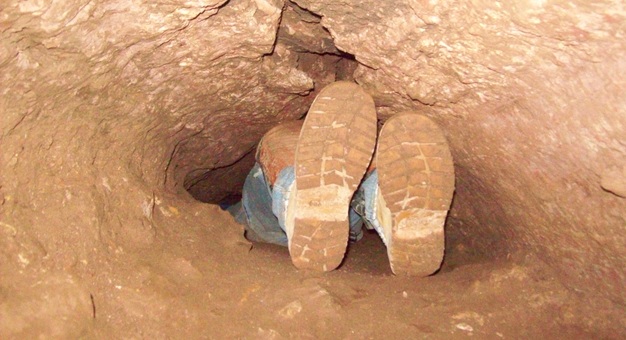
Discover more from Tales of Many Things
Subscribe to get the latest posts sent to your email.
